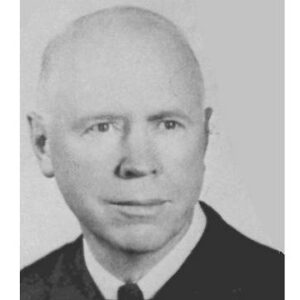William Parry Murphy was a well-known American physician who shared the Nobel Prize in Physiology or Medicine in 1934 with George Richards Minot and George Hoyt Whipple for their joint “discoveries concerning liver therapy in cases of anemia.” He wanted to practice medicine but couldn’t afford it at the time, so he took up teaching for a few years to help pay for his medical school tuition. When he was unable to continue receiving funds, he was fortunate enough to receive a Harvard scholarship, which allowed him to pursue his dream of becoming a doctor. While working as a physician at Peter Bent Brigham Hospital, he conducted research on pernicious anemia and its treatment using an uncooked liver diet (in cooperation with Minot and Whipple). The treatment resulted in a significant rise in red blood cell count in both animals and anemic human patients. Their groundbreaking finding proved to be a tremendous step forward in medical science, as the formerly incurable and fatal sickness was transformed into a curable disease, saving thousands of lives. Their work also contributed to the development of vitamin B12 treatment. In addition to his research, he taught at Harvard University until 1958, when he retired.
Childhood and Adolescence
Thomas Francis Murphy and Rose Anna Parry had William P. Murphy on February 6, 1892, in Stoughton, Wisconsin, United States of America.
He went to public schools in Wisconsin and Oregon during his childhood. In 1914, he graduated from the University of Oregon with an A.B. degree.
A Career of William P. Murphy
Despite his passion in medicine, William P. Murphy lacked the financial means to attend medical school. As a result, he worked as a high school physics and mathematics teacher from 1914 to 1916, earning money for his medical education.
With the money he had collected, he was ultimately accepted into the University of Oregon Medical School in Portland. He also worked as a laboratory assistant in the Department of Anatomy at the same time. Unfortunately, after only a year of education, his money ran out, causing him to drop out.
He served in the US army for two years, from 1917 to 1918. By coincidence, he came across an unique Harvard scholarship established by a former student, William Stanislaus Murphy, who intended to support “collegiate education of persons of the name of Murphy.”
This fund was crucial in assisting him in finishing his medical studies. He was awarded the scholarship for the next three years and graduated from Harvard Medical School in Boston in 1922 with a doctorate in medicine.
Murphy worked as a House Officer at Rhode Island Hospital for a few years after graduating from medical school, and subsequently as an Assistant Resident Physician at Peter Bent Brigham Hospital. He was promoted to Junior Associate in Medicine at the same institution after a year and a half of service.
He undertook general study on diabetes mellitus and other blood illnesses during this time. His research on anemia, particularly pernicious anemia, was particularly notable.
He noticed that when a substantial amount of raw liver was consumed, it rebuilt red blood cells more quickly than other diets while researching anemia. Dr. George Richards Minot and George Hoyt Whipple teamed up with him to chemically separate the therapeutic material.
Iron in the liver was also found to be responsible for healing anemia induced by bleeding, according to the study. The raw liver diet treatment was tried on individuals with pernicious anemia after successful animal tests.
Following successful human testing, an active component was discovered, which was a water-soluble extract containing a novel compound. Vitamin B12 was subsequently extracted from this extract by chemists.
Because pernicious anemia was formerly an incurable and fatal condition, the discovery that raw liver and its extracts might be used as a cure was a significant medical breakthrough.
He was then an Instructor in Medicine at Harvard from 1928 until 1935. In 1934, he was awarded the Nobel Prize for Physiology or Medicine (together with Minot and Whipple) for their important discovery.
He was an Associate in Medicine at Harvard from 1935 until 1938. In 1939, he published ‘Anemia in Practice: Pernicious Anemia.’
He was a Lecturer in Medicine at Harvard from 1948 until 1958. He was promoted to Senior Associate and then Emeritus Lecturer in Medicine at Harvard in 1958. He was also a consultant haematologist at a number of hospitals.
Major Projects of William P. Murphy
His research on pernicious anemia resulted in the discovery of a cure for the condition in 1924. (that was previously untreatable and fatal). Large amounts of raw, iron-rich liver were consumed as part of the treatment. Vitamin B12 was discovered to be a treatment for anemia after more research.
Achievements & Awards
William Murphy shared the Nobel Prize in Physiology or Medicine in 1934 with George H. Whipple and George R. Minot “for their findings concerning liver therapy in cases of anemia.” In 1930, he shared the Cameron Prize with Minot at the University of Edinburgh.
He also received the American Medical Association’s Bronze Medal and the First Rank of Decoration – Commander of the Order of the White Rose, Finland, in 1934.
In 1952, he was awarded the Cuban National Order of Merit. He was also a member of the Deutsche Akademie der Naturforscher Leopoldina, as well as other medical and associated societies in the United States and overseas.
Personal History and Legacy
On September 10, 1919, William P. Murphy married Pearl Harriett Adams, a descendant of US President John Adams and Massachusetts’ first certified female dentist.
William P. Murphy Jr., the couple’s son, went on to become a well-known physician. Priscilla Adams, their only child, was interested in flying but died tragically young in a plane crash in 1936.
He died in Brookline, Massachusetts, on October 9, 1987.
Estimated Net Worth
Estimated net worth of William P. Murphy is $1 million.


